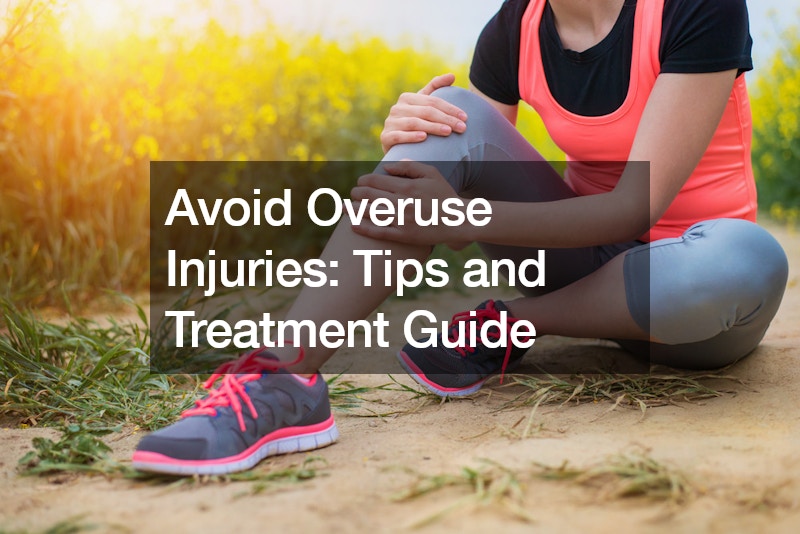
Disclaimer: This website provides health information for educational purposes only and is not a substitute for professional medical advice, diagnosis, or treatment. Always seek the guidance of a qualified healthcare provider with any questions you may have.
Overuse injuries are a common concern for athletes and fitness enthusiasts, often resulting from repetitive strain on muscles and joints. Whether you’re a dedicated runner, tennis player, or gym enthusiast, the risk of overuse injuries is present when pushing your body too hard without adequate rest and recovery. This comprehensive guide will delve into the causes, symptoms, prevention strategies, and treatment options for overuse injuries, empowering you to stay active and injury-free.
Understanding Overuse Injuries
Overuse injuries are often the result of repetitive motions or activities that strain the muscles, tendons, and joints beyond their normal limits. In sports like running or tennis, where movements are repetitive and high-impact, the risk of overuse injuries is particularly heightened.
For example, shin splints, a common overuse injury among runners, occur when the muscles and tendons surrounding the shinbone become inflamed due to repetitive stress. Initially, individuals may dismiss the discomfort as normal muscle soreness, but without intervention, the condition can worsen, leading to severe pain and difficulty in continuing with physical activities.
Similarly, Achilles tendinitis, characterized by pain and stiffness in the Achilles tendon, often develops gradually over time with repetitive activities like running or jumping. Initially, individuals may notice mild discomfort or tightness in the back of the ankle, especially after exercise. However, if the underlying cause of the injury is not addressed, the condition can progress, resulting in chronic pain and decreased mobility. What starts as minor discomfort can escalate into debilitating conditions that significantly impact daily functioning and quality of life. Therefore, understanding the early signs and symptoms of overuse injuries and seeking timely intervention is crucial in preventing their progression and facilitating recovery.
Recognizing the Symptoms
Recognizing the symptoms of overuse injuries is crucial for effectively managing and preventing their progression. These injuries often manifest as a triad of pain, swelling, and restricted mobility in the affected area, serving as early warning signs of underlying tissue damage. The pain associated with overuse injuries can vary in intensity, ranging from a persistent dull ache to sharp, stabbing sensations that worsen during physical activity and alleviate with rest. This pain serves as a signal from the body that the affected tissues are under stress and may be experiencing inflammation or microtrauma.
Accompanying the pain, swelling is a common indication of tissue inflammation and fluid accumulation, contributing to discomfort and stiffness in the affected area. The inflamed tissues may feel warm to the touch and appear red or discolored, further highlighting the body’s inflammatory response to overuse. Ignoring these symptoms can exacerbate the injury, leading to further tissue damage and prolonged recovery time.
By promptly identifying and addressing symptoms, individuals can take proactive measures to mitigate the severity of overuse injuries and expedite the healing process.
Treatment Options
Treatment options for overuse injuries typically involve a combination of rest, rehabilitation exercises, and targeted interventions to alleviate symptoms and promote tissue healing. Initially, the primary focus is on rest and activity modification to reduce stress on the affected tissues and allow them to recover. This may involve temporarily ceasing or modifying the activities that exacerbate symptoms, such as avoiding high-impact exercises or repetitive motions that strain the injured area.
Additionally, rehabilitation exercises play a crucial role in restoring strength, flexibility, and function to the affected tissues. Physical therapy programs tailored to the individual’s specific injury can help address underlying muscle imbalances, improve biomechanics, and promote proper movement patterns to prevent future recurrences. Modalities such as ice therapy, compression, and elevation (known as the R.I.C.E protocol) may also be used to manage pain and inflammation in the acute phase of injury.
In more severe cases or when conservative measures fail to provide relief, medical interventions such as corticosteroid injections or nonsteroidal anti-inflammatory drugs (NSAIDs) may be prescribed to reduce inflammation and alleviate symptoms. Surgical intervention may be considered for certain overuse injuries that involve structural damage or require corrective procedures to restore function. However, surgery is typically reserved for cases where conservative treatments have been exhausted or if there is a significant risk of long-term disability without surgical intervention. Ultimately, the choice of treatment depends on the severity of the injury, individual factors such as age and overall health, and the specific goals of the patient in terms of returning to activity and preventing future injuries.
Prevention Strategies
Preventing overuse injuries begins with smart training practices and adequate recovery strategies. Allow your body time to adapt and strengthen by gradually increasing the intensity and duration of your workouts. Incorporate rest days into your routine to prevent overtraining and give your muscles and joints time to repair. Warm up before exercise to increase blood flow and flexibility, reducing the risk of injury. Additionally, cross-training and varying your workout routine can prevent overloading specific muscles or joints, promoting overall balance and resilience.
Consulting an Orthopedic Specialist
If you experience persistent or severe symptoms of an overuse injury, it’s essential to seek professional medical advice from an orthopedic doctor. Orthopedic specialists are trained to diagnose and treat musculoskeletal conditions, providing personalized treatment plans tailored to your needs. Whether you require conservative management or more advanced interventions, an orthopedic doctor can guide you on the path to recovery and help you regain optimal function and performance.
In Summary
Overuse injuries can be disruptive and debilitating, but with the right knowledge and strategies, they are often preventable. By listening to your body, prioritizing rest and recovery, and seeking timely medical attention when needed, you can minimize the risk of overuse injuries and continue to pursue your fitness goals safely. Take proactive steps to care for your body, and it will reward you with strength, resilience, and longevity in your athletic pursuits.
.
